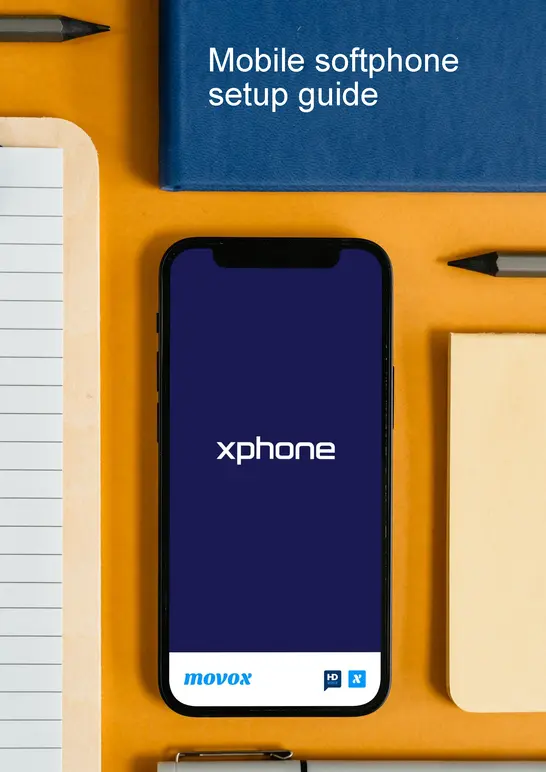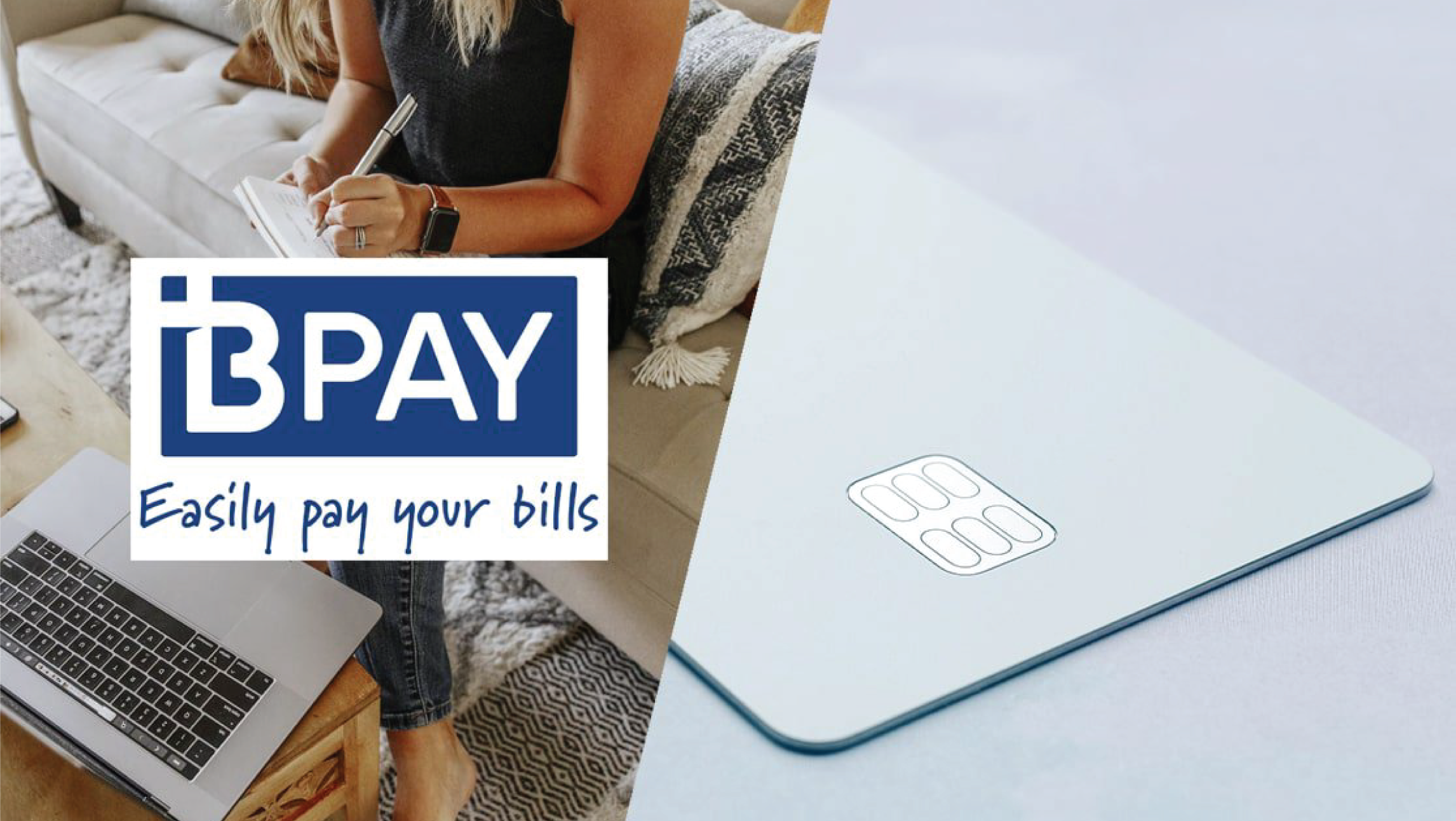Support
Create a support ticket online and your enquiry will be escalated to the correct team member for response
Advanced support
Advanced support gives you direct access to a remote technician and covers things like; program phones or router, changes to users or call flows and upload recorded messages.
Charges are calculated prior to submitting your booking request.
Help desk
You can contact our help desk between 9:00 AM and 5:00 PM Monday to Friday.
1800 100 800
Calling from outside Australia
+61 3 8566 8900
Using our services
About feature codes
Feature codes are numbers dialled from your phone or softphone keypad.
They make it easy to turn on and off regularly used phone system features like;
- call forwarding
- hotdesking
- call parking
- intercom and loudspeaker; and
- voicemail management
This section sets out feature codes and how to use them with your MOVOX Cloud PBX, softphone application or other voice service.
Call forwarding
Enable Call Forwarding *72
This feature code is used to exclusively enable call forwarding. The default code is “*72”, and when dialled a prompt will ask for the number to forward to. The caller is expected to enter the phone number then press pound, at which point call forwarding is enabled and the number is read back to ensure it wasn’t misdialled. The feature code requires the caller to enter the phone number to forward to each time they use the code. Optionally they can dial the feature code as a prefix on feature code “*7215552489715”, which will enable call forwarding to 15552489715.
Disable Call Forwarding *73
This feature code will disable any active call forwarding. Dialling the code, by default “*73”, plays a prompt to the caller informing them call forwarding has been disabled.
Toggle Call Forwarding *74
This feature code will enable or disable call forwarding depending on if it is active when dialled by default “*74”. Furthermore, this feature code remembers the last number you forwarded to and enables it without asking for a new number. If the caller has never enabled call forwarding then they will be prompted for the number. Like the enable call forwarding feature code, they can optionally prefix the code with a new call forwarding number.
(If the feature is enabled and they prepend the feature code it will disable call forwarding without storing the provided number.)
Update Call Forwarding *56
The update call forwarding feature code, by default “*56”, will prompt the caller to enter a new call forwarding number. This immediately replaces any number currently being used, set either by the enable or toggle feature code. The number entered is also stored for later use with the toggle feature. The status of call forwarding will not be changed by this code, so if it is disabled or enabled it will remain so.
Call parking
Call parking allows each user to have their own parking lot, and reception to be able to park calls for specific users. This is useful for allowing reception to answer calls and put them on hold for a specific party, who can see a light blinking on their phone when a call is waiting for them. The final party can answer the call once they are ready, or reception can “retrieve” the call if there is no answer.
Dialling *3 will park a call and retrieve a call from call parking.
To place a call into call parking:
- answer the call;
- press the transfer button on your handset;
- dial *3;
- wait for the system to tell you which spot the call has been placed into before hanging up.
To retrieve a call from call parking:
- dial *3;
- dial the parking spot number;
- wait to be connected to the parked call
Valet (*4)
Retrieve (*5)
Intercom and loud speaker
The intercom feature allows you to dial a phone and have the phone automatically go off-hook to speaker mode. This is useful for announcing callers or paging individuals who may not be near their phone.
Note that intercom is a phone-specific feature. Most phones support intercom but some do not.
Hot desking
Enable Hot-desking *11
This feature code is used to “log in” to a phone. When *11 is dialled, the caller will enter their ID (and optionally a pin). Upon successful completion, the phone from which they enabled hot-desking will now ring when they receive a call, get updates about voicemail, and basically act like the user’s phone.
Disable Hot-desking *12
This feature code is used to “log out” of a phone. Just as logging into the phone, once a user has dialled *12 and entered their ID and optional pin, the phone will cease to receive their inbound calls, voicemail updates, and other features. Inbound calls will likely go straight to voicemail (unless the user is permitted to be logged into multiple phones at once).
Toggle Hot-desking *13
This feature code is used to toggle the current state of the user’s devices. If logged out, dialling *13 logs the user into owned devices. If logged in, toggling logs the user out of all the devices they’re currently logged into.
Voicemail menu
The feature code *97 is used to access the main menu of a voicemail box.
When dialled the user can select from the sub-menus below:
Main menu
1 – to hear new messages
1 – save message
2 – replay message
7 – delete message
0 – return to the main menu
2 – to hear saved messages
5 – change your settings
1 – record your mailbox greeting
2 – record your name
3 – change your password
0 – return to the main menu
About voicemail
The MOVOX Cloud PBX system supports an unlimited number of voicemail boxes.
You can have a personal voicemail message on your phone, or a group voicemail message for your team, or department.
You can even set up voicemail messages for business hours, after-hours and holidays.
Voicemail recording files can be self-supplied, or subscribe to one of our professionally recorded message and greeting plans and we’ll upload the message for you.
You can listen to messages, save them, delete them and update your voicemail greeting by accessing your voicemail box.
Each voicemail box is allocated a voicemail 4-digit number. If the voicemail box is assigned to an individual user, the 4-digit number is usually the same as their extension number.
Video guides
Our video guides provide a quick summary on personal and group voicemail setup and use.
Personal voicemail
Group voicemail
Managing voicemail
Listening to voicemail messages
Once you have setup your voicemail, you’ll receive new messages sent to your email as a .wav file attachment. To hear your voicemail message, simply click the .wav file to open and play using your computers media player.
If your using a physical desk phone, your handset may also indicate new messages with a flashing button, or icon on the device screen. Please refer to your handset guide.
To hear your voicemail message via your phone, simply press the message button on the handset keypad, or dial *97. A voice prompt will announce the date and time of the voicemail message and guide you through various functions such as saving and deleting the voicemail message from your phone.
Deleting voicemail messages
To delete messages and manage your voicemail settings, press the message button on your handset, or dial *97 then enter your voicemail box nuber, followed by the hash (#) key. A voice prompt will guide you through various functions.
Note: When you delete a voicemail message on the phone this will not delete the voicemail message attached to your email. And vice versa, if you delete the voicemail email, this will not delete the voicemail message from the phone.
Voicemail menu
The feature code *97 is used to access the main menu of a voicemail box.
When dialled the user can select from the sub-menus below:
Main menu
1 – to hear new messages
1 – save message
2 – replay message
7 – delete message
0 – return to the main menu
2 – to hear saved messages
5 – change your settings
1 – record your mailbox greeting
2 – record your name
3 – change your password
0 – return to the main menu
Softphones
A softphone is a software application for your mobile, computer, or laptop. Softphones
XPhone TM is MOVOX’s softphone application available for iPhone and Android mobile devices and Windows PC’s and laptop’s. The application requires a subscription to our Softphone Plan 10 or Softphone Plan 20.
Use your company phone number
Softphones enable you to use your company phone number on your mobile phone or computer to make, receive and transfer calls just like you were sitting at your desk.
Where do you get the application?
You can download the softphone application to your mobile device from the App Store or Google Play. The Windows desktop version can be downloaded by clicking the Windows icon below.
Video guide
Watch our softphone video for a quick summary on how the softphone application works.
XPhone TM softphone application video
User Guides
Contact our Help Desk on 1800 100 800 for our latest Softphone User Guide.

Softphone FAQ’s
Can I use my own softphone with MOVOX?
The MOVOX XPhone TM softphone application is free to download and has been designed to work with MOVOX’s service and provides all the features and functions included in our Cloud PBX phone system.
Not all softphone applications will connect with MOVOX’s service. If you intend to use your own softphone application with MOVOX we recommend that you contact our Help-desk to confirm the softphone’s suitability.
What does the softphone application cost?
The MOVOX XPhone TM softphone application is free to download for mobile devices from the App Store and Google Play and via our website if using our Windows desktop softphone application.
The use the softphone application you will require an active subscription to our Softphone Plan 10 or Softphone Plan 20.
How can I use my company phone number?
If your company phone number is with another carrier you will need to transfer the number to MOVOX for use on your softphone application. Alternatively, MOVOX can provide you with a new local phone number as part of your Softphone Plan.
Call quality
Identifying call quality issues
The are many reasons why you may experience issues with call quality. In most instances the cause of call quality issues can be identified (and fixed) by performing basic troubleshooting techniques which are set out in this section.
The first step is to understand the extent of the problem. Call quality problems typically result from one of the following:
- Equipment: If you find that the problem relates to 1 single phone, the cause of the problem is most likely equipment related, For example; the phones spiral cord, cabling and other devices connected to the phone such as a headset.
- Firmware and settings: If you find that the problem relates to one or a few phones, but not all of them, the cause is most likely related to outdated phone firmware or phone settings.
- Network and Internet: If you find that the problem is occuring on all phones, the problem is most likely related to your router, switch and or Internet connection.
Isolating the issue
By answering the 4 questions below you will isolate potential causes of the problem.
How would you describe the problem?
| Answers | Potential cause |
| Phones do not ring when called | Firmware and settings Network and Internet |
| Calls drop after being connected | Network and Internet |
| Calls go straight to voicemail | Firmware and settings Network and Internet |
| Only one person can hear the other | Firmware and settings Network and Internet |
| There’s a delay for either person hearing the other | Firmware and settings Network and Internet |
| The call audio is distorted, choppy, garbled, or echoing | Firmware and settings Network and Internet |
How many phones experience the problem?
| Answers | Potential cause |
| Only on 1 single phone | Equipment Firmware and settings |
| On a few phones, but not all of them | Equipment Firmware and settings |
| On all phones | Network and Internet |
How often do you experience the problem?
| Answers | Potential cause |
| Every now and then | Equipment Firmware and settings |
| On most calls, but not all calls | Equipment Firmware and settings Network and Internet |
| On every phone call | Equipment Firmware and settings Network and Internet |
What is the direction of the call?
| Answers | Potential cause |
| Inbound (calls received) | Equipment Firmware and settings Network and Internet |
| Outbound (calls made) | Equipment Firmware and settings Network and Internet |
| Both inbound & outbound | Network and Internet |
| Internal calls (calling extension to extension) | Network and Internet |
Troubleshooting
Once you have isolated the potential cause of the problem we recommend that you perform the checks and troubleshooting techniques set out below.
Network and Internet
Internet outage
Follow the steps below to ensure that you are connected to the Internet.
Open a web browser on your computer and open a webpage. If you can view the webpage, your network is connected to the Internet and you can ignor “Internet outage” as a potential cause of call problems.
If you cannot view the webpage that you entered, then:
- Check that your modem’s power light is on and cables are securely connected;
- Check the status lights on your nbn connection box.
If the status lights on both devices are stable, then check that there are no NBN outages in your area. You can do this by visiting https://www.nbnco.com.au/support/network-status from your mobile phone.
If the lights on either device are flashing, or red, or orange in colour; then, restart your modem and nbn® connection box so they can reconnect.
If your modem and or nbn connection box does not reconnect and there are NBN outages your area please raise a support ticket with us by clicking the following link Create a support ticket
Disable SIP ALG
SIP ALG is a feature found in most networked routers, operating as a function of its firewall.SIP ALG interferes with IP and signalling protocols. If you are experiencing:
- Only one person can hear the other
- Phones do not ring when called
- Calls drop after being connected
- Calls go straight to voicemail
It is most likely that SIP ALG is enabled in your router. To disable SIP ALG, you will need to log into your router.
Please navigate to > Getting on-board > Network readiness for instructions on how to disable SIP ALG for commonly used routers. Alternately, please refer to your router user guide.
Jitter
Call quality issues related to jitter manifest as disarranged sound. These issues happen because of the way phone calls are transferred over the internet. When on a call, your voice is converted into data packets and then sent over the internet to the person you’re speaking with.
When there’s a delay in transmission, data packets can get jumbled or have gaps. You can fix jitter with a jitter buffer. A jitter buffer temporarily stores data packets in the right sequence and transmits them in intervals. As a result, clear audio reaches its recipient with minimum delay.
Latency
Latency is a delay between when one person says something and the other person hearing it. It may seem that you and your caller are talking over each other and you can hear your own voice on the call.
There are a few types of latency that happen on calls: propagation delay, handling delay, and queuing delay. Latency can be solved and prevented by prioritising SIP traffic in your network router by using:
- Bandwidth reservation
- Policy-based network management
- Multi-Protocol Label Switching (MPLS)
Prioritising SIP traffic over the network will improve both latency and jitter.
Please refer to your router user guide or network technician to prioritise SIP traffic.
Firmware and settings
If you find that the problem occurs only on 1 phone, or only on a specific phone model, then follow the steps below to determine if the issue relates to the phone model, the phone’s firmware or the phone hardware.
Compare other phones (if possible)
If you have other phones then compare the problem phone with other phones of the same model that have the same firmware version.
If the problem can be replicated on these phones, then the next thing you should do is upgrade the firmware to the latest version.
Review the phone manufacturer documentation on how to upgrade the phone’s firmware, or contact our help-desk for guidance.
Equipment
If you’ve determined that the cause of the problem is not firmware or a phone model related problem, then follow the steps below to determine if the issue relates to equipment.
Audio delivery
Check if the problem is the same when using the handset, speakerphone or a headset (if you are using a headset)?
- If the problem is isolated to the handset, test the phone’s spiral cable by swapping the handset and spiral cable with a working phone and test.
- If the problem is isolated to the headset, check the headset connections and/or swap the headset with another from a working phone and test.
- If the problem is only with the speakerphone, the phone hardware may be faulty and need to be repaired or replaced. In this instance, please contact our Help Desk on 1800 100 800.
Video guides
Number porting
Transferring calls
Connecting your phone (via PC)
Connecting your phone (via router)
Getting onboard
About number porting
Transferring phone numbers from your existing phone company to MOVOX is a seamless process referred to as local number portability, or number porting. It allows you to keep your phone numbers when relocating or changing phone company.
Your old phone system may have required a separate phone number for each simultaneous call. With MOVOX you can make multiple simultaneous calls using the one phone number. This means when transferring numbers to us you only need to transfer the phone numbers that people call you on.
Porting process
If you want to port your existing phone numbers to MOVOX:
- The numbers must be active. Do not disconnect your service with your current phone company as we cannot port your number if it has been disconnected;
- Service features associated with the number such as Internet or call forwarding must be removed prior to submitting a number transfer application;
- Once we have received your number porting application, we will contact your current phone company and initiate the transfer process;
- There are different timeframes depending on the number porting category associated with the service type and the quantity of numbers to be transferred. (See: Number porting categories for further information).
Rejection charges
Avoid rejection charges
In addition to number porting fees detailed above, other fees and charges may apply when porting your number from one phone company to another.
This may include:
- Early termination fee if you break your contract with your current phone company;
- Port away fees which may be charged by your current phone company. It’s best to refer to the Critical Information Summary associated with your current phone plan. These can be located on the website of your current phone company;
- Port Rejection Charges if your Porting Application is rejected by the losing carrier. The reasons and applicable charges for Port Rejections are detailed in the table below. If a Porting Application is rejected you will be charged the applicable number porting fee to resubmit the Port Application; and
- Outstanding call charges with your current phone company. Note that your current phone company cannot refuse to port your number if you owe them money for any outstanding balance on your account.
Porting categories
Category A – Service types categorised as a (CATA) “simple port” include a single local service number beginning with 02, 03, 07 and 08.
Category A transfers generally take 4-6 business days to complete.
Category C – Service types categorised as a (CATC) “complex port” include:
- Multiple local numbers beginning with 02, 03, 07 and 08;
- Number blocks or a sequential range of numbers;
- 13, 1300 and 1800 inbound numbers; and
- Numbers associated with service features such as Internet or call forwarding
Category C transfers require project management from both MOVOX and the losing carrier and generally take 4-6 weeks to complete depending on complexity.
Porting charges
Australian local phone number transfer
1300/1800 Inbound number transfer
10 phone number range transfer
100 phone number range transfer
$33
per number application
$75
per number application
$100
per number application
$165
per number application
This fee is charged for each Australian local phone number transfer application
Porting rejection charge $40 per attempt, per number
This fee is charged for each inbound phone number transfer application
Porting rejection charge $40 per attempt, per number
This fee is charged for each 10 phone number range transfer application
Porting rejection charge $300 per attempt, per number range
This fee is charged for each 100 phone number range transfer application
Porting rejection charge $300 per attempt, per number range
Related plans




Australian
(02), (03), (07), (08)
local phone number plan
1300 / 1800
Australian inbound
phone number plan
Block of 10
Australian
local phone numbers
Block of 100
Australian
local phone numbers
$3
per
month
$15
per
month
$20
per
month
$50
per
month
Includes 1 x Australian (02), (03), (07) or (08) local phone number
Includes 1 x Australian 1300 or 1800 inbound phone number
Includes 10 consecutive Australian (02), (03), (07) or (08) local phone numbers
Includes 100 consecutive Australian (02), (03), (07) or (08) local phone numbers
Network readiness
Preparing your local network in accordance with our suggested settings will ensure that we deliver reliable communication solutions with crystal clear call quality.
Security
Protecting your computers and IP phones from online threats is essential.
Failing to secure your PBX or IP phones and devices may result in:
Toll Fraud – utilising your PBX, devices or account details to make calls at your expense;
Unauthorised access – to your system resources, information, privileges and listening to your calls and voicemail;
Denial of Service – disabling your voice communication using packet floods.
These security steps are critical to ensure your protection against hackers. If you require assistance configuring or implementing any of our recommendations, contact out Technical Support Team or your IT service provider.
Security recomendations
To make sure that your network is more resilient to attacks and Toll Fraud, we recommend you do the following:
Passwords
Use a strong alphanumeric passwords for your IP phones and extensions. Change your router’s default “admin” password and replace it with something complex. Once done, document the new passwords and store them in a safe place for future reference.
Disable remote access
Remote access (or remote management) is a convenient way for users and technicians to manage your router over the internet but it can also be used by hackers to access your network and devices;
Block IP addresses
Only allow SIP authentication and inbound call requests from MOVOX’s trusted IP addresses and block all others. Please raise a Support Ticket to request MOVOX’s trusted IP addresses.
Use a firewall
Firewalls help protect against malicious software and prevent people from travelling through your internet connection to compromise your local network by limiting which ports can be used, IP addresses, and type of traffic. We recommend you start with a block-all policy and then add rules to allow access from trusted or known sources.
Keep device software up-to-date
Software and firmware updates are critical to the security and reliability of your computers, phones and other network devices. Some updates address bugs and potential exploits in your computer. We recommend you set a regular reminder to check and update your device software and firmware if necessary.
Use a non-standard access port
Protect the administration and remote management interface by using a non-standard access port.
Restrict International calls
Please raise a Support Ticket to request restrictions on calls to international destinations
Manage employee access
Delete employee authorisation codes when they leave your company.
Delete usernames and passwords
When discarding of storing IP phones and devices, ensure you factory reset devices and check that authentication usernames and passwords have been removed
SIP ALG
SIP ALG is a feature found in most networked routers, operating as a function of its firewall. It consists of two different technologies, explained below:
Session Initiation Protocol (SIP)
The underlying service that powers all Voice over Internet Protocol (VoIP) phones, apps, and devices. SIP manages registering devices, maintaining call presence, and overseeing the call audio. Read more about SIP in our deep dive here.
Application Layer Gateway (ALG)
Routers segments your ISP and your internal network through a process known as Network Address Translation (NAT). An ALG acts as a proxy to rewrite the destination addresses in data packets for improved connectivity.
SIP ALG interferes with IP and signalling protocols. If you are experiencing:
- Only one person can hear the other
- Phones do not ring when called
- Calls drop after being connected
- Calls go straight to voicemail
It is most likely that SIP ALG is enabled in your router. To disable SIP ALG, you will need to log into your router.
We’ve set out instructions on how to disable SIP ALG for commonly used routers such as Linksys, Netgear, D-Link and TP-Link. We recommend that you also refer to your router manufacturers’ user guide for instructions specific to the make and model of your router.
TP-Link
Archer series
- Click on the Advanced Tab;
- Expand the NAT Forwarding menu on the left side of the screen;
- Uncheck SIP ALG, RTSP ALG, and H323 ALG checkboxes;
- Click Save.
Other TP-Link routers
Use the Telnet client from the Command Prompt and apply the following command:
ip nat service sip sw off
D-Link
- Click on Advanced Settings;
- Locate the Application Level Gateway (ALG) Configuration;
- Uncheck the SIP option; and
- Click Save.
DIR-655
- Click Advanced, located along the top;
- Click Firewall Settings on the left side of the screen;
- Uncheck Enable SPI;
- Set both UDP and TCP Endpoint Filtering to Endpoint Independent;
- Uncheck SIP from Application Level Gateway Configuration; and
- Click Save.
Netgear
With the Genie interface
- Select the Advanced tab at the top;
- Expand the Setup menu on the left of the screen;
- Click WAN Setup; and
- Check the box labelled Disable SIP ALG.
Other Netgear routers
- Under Security/Firewall, click on Advanced Settings;
- Disable SIP ALG;
- Locate Session Limit under Security/Firewall; and
- Increase the UDP timeout to 300 seconds
ASUS
- Under the Advanced Settings section, click WAN;
- Click the NAT Passthrough tab;
- Change the SIP Passthrough setting to “Disable.”;
- Click Apply.
Fortinet
Use the following commands from the CLI interface:
config system session-helper
show system session-helper
- Find the SIP session instance, indicated by #12;
- Delete #12 or the appropriate number; and
Confirm its deletion by executing this command:
show system session-helper
Ubiquiti
Use the configuration tree if supported:
system > conntrack > modules > sip > disable
Alternatively, you can SSH into the device and run the following commands:
configure
set system conntrack modules sip disable
commit
save
exit
Linksys
Smart Wi-Fi (E-series)
- On the left side of the screen, click on Connectivity;
- Click the Administration tab;
- Under Application Layer Gateway, uncheck SIP;
- Click Apply or Save;
Other Linksys routers
- On the Admin page, go to the ‘Advanced’; and
- Disable the SIP ALG feature.
Linksys BEFSR41 routers
- On the Admin page select Applications/Gaming;
- Click on Port Triggering;
- Type in ‘TCP’ as the application;
- Type in ‘5060’ into the Start Port and End Port for the ‘Triggering Range’ and ‘Forwarded Range’ fields;
- Check ‘Enable’; and
- Click on Save and Reboot.
Cisco
Cisco General and Enterprise-Class routers
- no ip nat service sip tcp port 5060;
- no ip nat service sip udp port 5060;
Cisco PIX routers
- no fixup protocol sip 5060;
- no fixup protocol sip udp 5060
Cisco ASA routers
- Locate ‘Class inspection_default’ under ‘Policy-map global_policy’; and
- Execute this command:
no inspect sip
Softphones
A softphone is a software application for your mobile, computer, or laptop. Softphones
XPhone TM is MOVOX’s softphone application available for iPhone and Android mobile devices and Windows PC’s and laptop’s. The application requires a subscription to our Softphone Plan 10 or Softphone Plan 20.
Use your company phone number
Softphones enable you to use your company phone number on your mobile phone or computer to make, receive and transfer calls just like you were sitting at your desk.
Where do you get the application?
You can download the softphone application to your mobile device from the App Store or Google Play. The Windows desktop version can be downloaded by clicking the Windows icon below.
Video guide
Watch our softphone video for a quick summary on how the softphone application works.
XPhone TM softphone application video
User Guides
Contact our Help Desk on 1800 100 800 for our latest Softphone User Guide.

Softphone FAQ’s
Can I use my own softphone with MOVOX?
The MOVOX XPhone TM softphone application is free to download and has been designed to work with MOVOX’s service and provides all the features and functions included in our Cloud PBX phone system.
Not all softphone applications will connect with MOVOX’s service. If you intend to use your own softphone application with MOVOX we recommend that you contact our Help-desk to confirm the softphone’s suitability.
What does the softphone application cost?
The MOVOX XPhone <sup>TM</sup> softphone application is free to download for mobile devcies from the App Store and Google Play and via our website if using our Windows desktop softphone application.
The use the softphone application you will require an active subscription to our Softphone Plan 10 or Softphone Plan 20.
How can I use my company phone number?
If your company phone number is with another carrier you will need to transfer the number to MOVOX for use on your softphone application. Alternatively, MOVOX can provide you with a new local phone number as part of your Softphone Plan.
Your account
About your bill
Our bills are designed to be viewed online in your web browser. From your web browser bills can be printed, saved or forward to someone else.
Your bill is categorised into the following sections:
- Account activity;
- Plans & usage;
- Usage detail; and
- Other services
Clicking on a section, content box, heading or product icon will reveal detailed information and usage charges.
Your bill may take several seconds to appear depending on the amount of data contained in your bill, the larger the bill the longer it will take to open in your browser.

Billing FAQ’s
How and when will I receive my bill?
If you’ve subscribed to one of our recurring plans we’ll send a monthly invoice to your nominated email address, which will contain details of your services and itemise any charges for each service, such as call charges.
The email will contain a “view bill” button, when pressed your bill will automatically open in your web browser.
Monthly bills include recurring charges in advance and usage charges incurred in previous billing periods.
Your online bill is dynamic, we’ve designed it to be easily read as a summary or by clicking any content box, heading or product icon you can view detailed information and usage charges.
We’ll send you an email each time a new bill is issued.
To view your bill click the link within the email or login to your account to view current and past bills.
Where can I view my itemised charges?
To view itemised charges, expand sections of your bill by clicking the down V arrow next to section headings
What happens if I don't pay on-time?
Customers who have failed to pay their account in full by the due date will be sent an overdue notice on the third day following the due date.
The overdue notice will be sent by email. It advises the customer that MOVOX has not received payment of their account to pay within 7 days.
The notice also advises to disregard the notice if they have made a payment within the past 3 days.
If you are having difficulty in paying the invoiced amount please email us at accounts@movox.com.au or call us on 1800 100 800 (Mon-Fri, 9am-5pm AEST).
Is there a surcharge if I pay by credit card?
There’s no surcharge when using VISA or MasterCard. AMEX and Diners Club cards incur 4% payment surcharge.
If you have more questions

Pay by phone
Use our phone-pay service 24-hours a day, 7-days a week to pay using Visa, MasterCard, AMEX or Diners Club card.

Online
To pay online using your Visa, MasterCard, AMEX or Diners Club card click the button below

Direct debit
Pay a bill automatically on the due date using direct debit. To setup Direct Debit click the button below.
Hardware settings
IP phones
IP phones include desk phones, video phones, cordless phones, conference phones and door phones. IP phones connect to MOVOX’s Cloud PBX phone system via the internet, using an ethernet cable or Wi-Fi connection.
Connecting your IP phone
You can connect your IP phone directly to your modem / router, or some IP phones allow you to share the Internet connection from the phone to a computer.
We’ve created 1-2 minute videos that will guide you on setting up and connecting your phone to MOVOX’s Cloud PBX phone system.
Connecting your phone (via PC)
Connecting your phone (via router)
Call quality
Identifying call quality issues
The are many reasons why you may experience issues with call quality. In most instances the cause of call quality issues can be identified (and fixed) by performing basic troubleshooting techniques.
To learn about these troubleshooting techniques, please refer to the Support section of our website titled > Using our services > Call quality.
Router readiness
Preparing your local network in accordance with our suggested settings will ensure that we deliver reliable communication solutions with crystal clear call quality.
Security
Protecting your computers and IP phones from online threats is essential.
Failing to secure your PBX or IP phones and devices may result in:
Toll Fraud – utilising your PBX, devices or account details to make calls at your expense;
Unauthorised access – to your system resources, information, privileges and listening to your calls and voicemail;
Denial of Service – disabling your voice communication using packet floods.
These security steps are critical to ensure your protection against hackers. If you require assistance configuring or implementing any of our recommendations, contact out Technical Support Team or your IT service provider.
Security recomendations
To make sure that your network is more resilient to attacks and Toll Fraud, we recommend you do the following:
Passwords
Use a strong alphanumeric passwords for your IP phones and extensions. Change your router’s default “admin” password and replace it with something complex. Once done, document the new passwords and store them in a safe place for future reference.
Disable remote access
Remote access (or remote management) is a convenient way for users and technicians to manage your router over the internet but it can also be used by hackers to access your network and devices;
Block IP addresses
Only allow SIP authentication and inbound call requests from MOVOX’s trusted IP addresses and block all others. Please raise a Support Ticket to request MOVOX’s trusted IP addresses.
Use a firewall
Firewalls help protect against malicious software and prevent people from travelling through your internet connection to compromise your local network by limiting which ports can be used, IP addresses, and type of traffic. We recommend you start with a block-all policy and then add rules to allow access from trusted or known sources.
Keep device software up-to-date
Software and firmware updates are critical to the security and reliability of your computers, phones and other network devices. Some updates address bugs and potential exploits in your computer. We recommend you set a regular reminder to check and update your device software and firmware if necessary.
Use a non-standard access port
Protect the administration and remote management interface by using a non-standard access port.
Restrict International calls
Please raise a Support Ticket to request restrictions on calls to international destinations
Manage employee access
Delete employee authorisation codes when they leave your company.
Delete usernames and passwords
When discarding of storing IP phones and devices, ensure you factory reset devices and check that authentication usernames and passwords have been removed
SIP ALG
SIP ALG is a feature found in most networked routers, operating as a function of its firewall. It consists of two different technologies, explained below:
Session Initiation Protocol (SIP)
The underlying service that powers all Voice over Internet Protocol (VoIP) phones, apps, and devices. SIP manages registering devices, maintaining call presence, and overseeing the call audio. Read more about SIP in our deep dive here.
Application Layer Gateway (ALG)
Routers segments your ISP and your internal network through a process known as Network Address Translation (NAT). An ALG acts as a proxy to rewrite the destination addresses in data packets for improved connectivity.
SIP ALG interferes with IP and signalling protocols. If you are experiencing:
- Only one person can hear the other
- Phones do not ring when called
- Calls drop after being connected
- Calls go straight to voicemail
It is most likely that SIP ALG is enabled in your router. To disable SIP ALG, you will need to log into your router.
We’ve set out instructions on how to disable SIP ALG for commonly used routers such as Linksys, Netgear, D-Link and TP-Link. We recommend that you also refer to your router manufacturers’ user guide for instructions specific to the make and model of your router.
TP-Link
Archer series
- Click on the Advanced Tab;
- Expand the NAT Forwarding menu on the left side of the screen;
- Uncheck SIP ALG, RTSP ALG, and H323 ALG checkboxes;
- Click Save.
Other TP-Link routers
Use the Telnet client from the Command Prompt and apply the following command:
ip nat service sip sw off
D-Link
- Click on Advanced Settings;
- Locate the Application Level Gateway (ALG) Configuration;
- Uncheck the SIP option; and
- Click Save.
DIR-655
- Click Advanced, located along the top;
- Click Firewall Settings on the left side of the screen;
- Uncheck Enable SPI;
- Set both UDP and TCP Endpoint Filtering to Endpoint Independent;
- Uncheck SIP from Application Level Gateway Configuration; and
- Click Save.
Netgear
With the Genie interface
- Select the Advanced tab at the top;
- Expand the Setup menu on the left of the screen;
- Click WAN Setup; and
- Check the box labelled Disable SIP ALG.
Other Netgear routers
- Under Security/Firewall, click on Advanced Settings;
- Disable SIP ALG;
- Locate Session Limit under Security/Firewall; and
- Increase the UDP timeout to 300 seconds
ASUS
- Under the Advanced Settings section, click WAN;
- Click the NAT Passthrough tab;
- Change the SIP Passthrough setting to “Disable.”;
- Click Apply.
Fortinet
Use the following commands from the CLI interface:
config system session-helper
show system session-helper
- Find the SIP session instance, indicated by #12;
- Delete #12 or the appropriate number; and
Confirm its deletion by executing this command:
show system session-helper
Ubiquiti
Use the configuration tree if supported:
system > conntrack > modules > sip > disable
Alternatively, you can SSH into the device and run the following commands:
configure
set system conntrack modules sip disable
commit
save
exit
Linksys
Smart Wi-Fi (E-series)
- On the left side of the screen, click on Connectivity;
- Click the Administration tab;
- Under Application Layer Gateway, uncheck SIP;
- Click Apply or Save;
Other Linksys routers
- On the Admin page, go to the ‘Advanced’; and
- Disable the SIP ALG feature.
Linksys BEFSR41 routers
- On the Admin page select Applications/Gaming;
- Click on Port Triggering;
- Type in ‘TCP’ as the application;
- Type in ‘5060’ into the Start Port and End Port for the ‘Triggering Range’ and ‘Forwarded Range’ fields;
- Check ‘Enable’; and
- Click on Save and Reboot.
Cisco
Cisco General and Enterprise-Class routers
- no ip nat service sip tcp port 5060;
- no ip nat service sip udp port 5060;
Cisco PIX routers
- no fixup protocol sip 5060;
- no fixup protocol sip udp 5060
Cisco ASA routers
- Locate ‘Class inspection_default’ under ‘Policy-map global_policy’; and
- Execute this command:
no inspect sip







